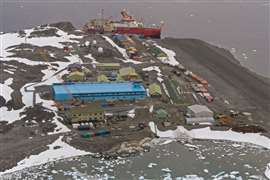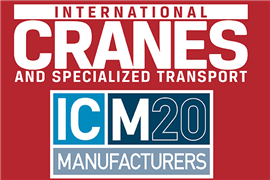Read this article in 中文 Français Deutsch Italiano Português Español
Funding for US$4.5bn bridges project
18 July 2024
A US$4.5-billion project, the US state of Massachusetts and the federal government recently agreed to financing one of two key bridges in the commonwealth, but how long will construction last for both?
 The sun sets on the Sagamore Bridge. The bridge, which runs over the Cape Cod Canal in Massachusetts, US, is due to be replaced. (Image: Adobe Stock)
The sun sets on the Sagamore Bridge. The bridge, which runs over the Cape Cod Canal in Massachusetts, US, is due to be replaced. (Image: Adobe Stock)
The bridges – the Sagamore and Bourne – were both constructed in the early 1930s and opened in 1935. About 3 miles (5km) separates the passings, which run over the manmade Cape Code Canal.
They are both steel arch bridges with suspended decks, although the Bourne is nearly 1,000 ft (305m) longer than its sibling with a length of 2,384 ft (727m).
The structures are the only two roads on and off Cape Cod in the Atlantic Ocean. The Cape is technically an island since the construction of the canal in 1919.
Discussion on replacing the nearly 90-year-old infrastructure has spanned years, but with just less than half the financing ($2.1 billion) secured, the Sagamore will be first under construction.
Massachusetts Governor Maura Healey said the design-build phase of the project is next, with design expected to finish in 2026 and initial construction planned for ‘no later’ than 2027. Previously, the project was slated for 2028 start, but the recent injection of funding has moved up the timeline.
The Bourne will need to wait its turn as the project finds an additional $2.4 billion (assuming the initial price stag stays put at $4.5 billion). Governor Healey said a financing plan is still ongoing.
Both construction projects are expected to last eight to ten years, according to federal officials. If Sagamore construction starts on time, it could finish as early as 2035. Work on the Bourne would need to start before 2030 or risk running into the 2040s.
Why is the US dashing to replace its massive bridges?
The news from Cape Cod is one of many developing and ongoing bridge construction projects across the US.
This should not come as a surprise to the industry, as the country has been behind in replacing its aging infrastructure. The Bourne and Sagamore, for example, was deemed by the US Army Corps of Engineers as “functionally obsolete” earlier this year.
The American Society of Civil Engineers (ASCE) – which grades the country’s infrastructure on a four-year basis – gave US bridges a ‘C’ in 2021.
“There are more than 617,000 bridges across the United States. Currently, 42% of all bridges are at least 50 years old, and 46,154, or 7.5% of the nation’s bridges, are considered structurally deficient, meaning they are in ‘poor’ condition,” said ASCE “Unfortunately, 178 million trips are taken across these structurally deficient bridges every day.”
Cape Cod’s twin bridges – during the busy summer months – have more than 120,000 vehicles cross daily.
While the C grade is average, ASCE noted in its 2021 report that infrastructure investment and management will needs to increase and maintain if the country wants to catch up to neglect.
“A recent estimate for the nation’s backlog of bridge repair needs is $125 billion. We need to increase spending on bridge rehabilitation from $14.4 billion annually to $22.7 billion annually, or by 58%, if we are to improve the condition,” said ASCE. “At the current rate of investment, it will take until 2071 to make all of the repairs that are currently necessary, and the additional deterioration over the next 50 years will become overwhelming.”
STAY CONNECTED


Receive the information you need when you need it through our world-leading magazines, newsletters and daily briefings.
CONNECT WITH THE TEAM











